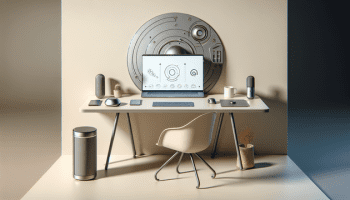
It’s lightweight, fluid, simple, clean, well-integrated. Stock Android has a lot of positives to it, and I thoroughly enjoy running it on my 2013 Nexus 7. However, at the risk of upsetting all the Android purists, I’m going to argue here — like I have for the past year in various online and real conversations — that it is boring. There I said it, stock Android is really boring. And OEM skins, despite all the bad rep they get, deserve some credit for adding essential and/or cool features to our beloved platform.
Skin to Stock
Remember when Android didn’t have quick access toggles in the notification bar? Samsung, LG, Sony, and multiple custom ROMs started that trend. How about when Android didn’t support InfraRed blasters? The HTC One (M7) and the Samsung Galaxy S4 were the first devices to include that and have dedicated apps to support it. Should I even mention the old Android dialer that didn’t offer smart dialling for contact names, the previous Camera app that had no features to speak of, or the pre-ICS lockscreen that didn’t support widgets or shortcuts?
Many of the stock Android features we now take for granted have their shady beginnings in an OEM skin. And if history is any indication, many of the current OEM skin options might end up in stock Android soon. Stock Android isn’t far superior to custom skins. In many ways, it is just catching up with them by implementing their features (albeit in a more streamlined fashion).


Like Android’s notification toggles? Well, this is where they started.
Additions that matter
I’ll be the first to tell you that I don’t care about 50% of the skin additions many OEMs are currently introducing. BlinkFeed, S Health, and whatever additional apps Sony or LG decide to throw into their skins are of very little interest to me. The additions that make a difference, however, are the options and utilities that enhance my Android usage.
As someone who has been completely wooed by the LG G2 — to a point where I didn’t even root it, whereas no other Android device lasted me a week before having CyanogenMod installed — there are a few LG additions that completely changed the way I use my phone.
- Double tap to unlock, but equally as important double tap on the notification bar to lock: I now try to double tap every screen in my life, even my iPad and my Nexus 7, to no avail.
- Clip Tray: the OS automatically saves the last 20 items I copied, making it easier to find something from a few hours or days ago and paste it.
- Q Memo: LG’s easily launched screen drawing and cropping tool is always there when I need to annotate something and share it as quickly as possible.
- Notification drop-down toggle: right next to the Back and Home keys, LG added a button that drops down the notification shade and pulls it back up. It’s a perfect feature for large screened devices, so you don’t stretch your fingers to reach for the top.


QuickMemo is the easiest way to annotate and crop a part of your screen
And so on. Sure, there are third-party clients or mods that do the same things, but not with the same seamlessness and effortlessness as when they are integrated into the software.
Not all that bad
I have had this stock vs skin conversation frequently enough in the past few months that I thought it important to pin down my thoughts — also because it would be easier to refer someone to this post then go over the same arguments again and again.
Stock Android is great, but it isn’t the be-all and end-all of UI and UX. It’s easy to have a snobbish attitude for stock and be dismissive toward Sense, TouchWiz, and whatever the names of Sony and LG’s skins are, laugh at their bloat and useless features. However, they have their merits, and as someone who has learned that in the past year, they are quite usable once you deactivate some options and install a few Google apps back.
















